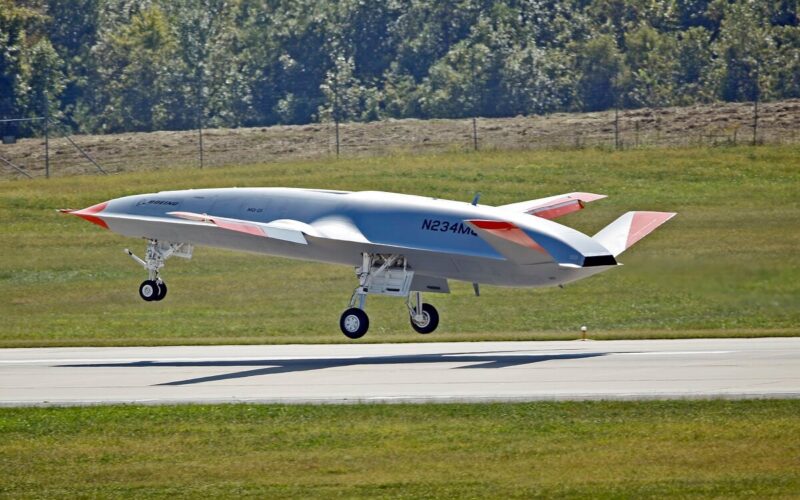Boeing’s unmanned aerial refueler, the MQ-25 Stingray, successfully achieved its maiden sortie. The aircraft validated its basic flight functions and operations with the ground control station.
The two-hour-long flight, in conjunction with the US Navy, took place at MidAmerica Airport in Mascoutah, Illinois, on September 19, 2019, and consisted of an autonomous taxi and takeoff and a pre-determined route flight.
“The flight of this test asset two years before our first MQ-25 arrives represents the first big step in a series of early learning opportunities that are helping us rapidly progress towards delivery of a game-changing capability for the carrier air wing and strike group commanders,” said the Navy’s Unmanned Carrier Aviation Program Manager Capt. Chad Reed in a statement.
The Boeing-owned test asset, named T1, received its experimental airworthiness certificate from the FAA earlier in September 2019. The tests carried on this first aircraft will help develop the engineering and manufacturing development (EMD) prototypes to be delivered by 2021.
Increase the carrier wing range while preserving the Super Hornet
Initially, the US Navy considered the development of carrier-capable drones that would be able to carry strikes as well as intelligence, surveillance, and reconnaissance (ISR) missions. Thus was started the Unmanned Carrier-Launched Airborne Surveillance and Strike (UCLASS) program.
Northrop Grumman, Lockheed Martin, General Atomics, and Boeing entered the competition. In April 2015, Northrop Grumman X-47B demonstrator showed its capability to operate from a carrier.
But due to budget constraints, the program was streamlined, and the Navy shifted its concept to address a more specific issue:
For now, tanking missions are carried by Super Hornets, which are loaded with five fuel tanks. But with 20% to 30% of their flight time dedicated to those missions, the Navy is scared of prematurely burning through the service life of their aircraft.
In 2016, the US Navy renamed its program as the Carrier-Based Aerial-Refueling System (CBAR). The proposed aircraft was now required to deliver 7,000 liters of fuel within 500 miles (approximately 920 km) to a carrier wing composed of E/A-18G Growler electronic warfare aircraft as well as an array of F-35C and F/A-18 Super Hornet fighter jets. This would allow the Navy to keep its aircraft carrier further away from the coast during an operation, out of reach from potential threats coming from the ground.
The contract valued at $805 million was eventually awarded to Boeing and its MQ-25 Stingray in August 2018.
Under this development contract, Boeing is to design, develop, manufacture, test, deliver, and maintain an initial four MQ-25A unmanned aerial refueler. They will have to be operational by 2024. If the program is satisfactory enough, an order of 72 aircraft will be placed for an estimated $ 13 billion.
Further capacities could be integrated down the line to the airframe, including the ISR systems and strike weapons that were initially planned

